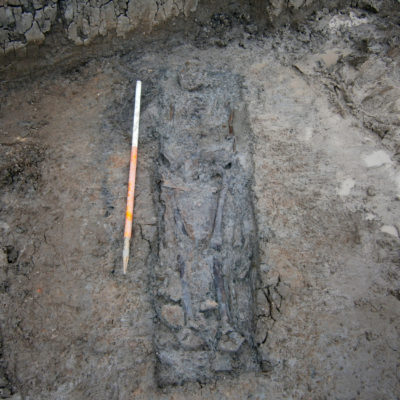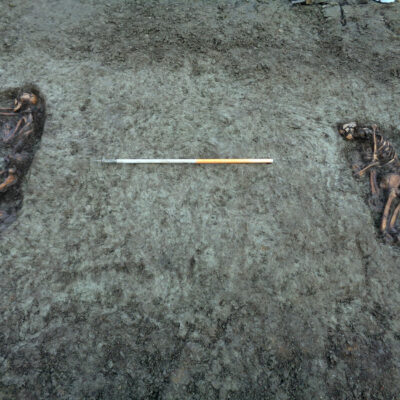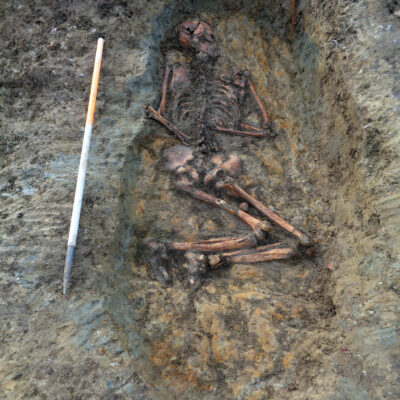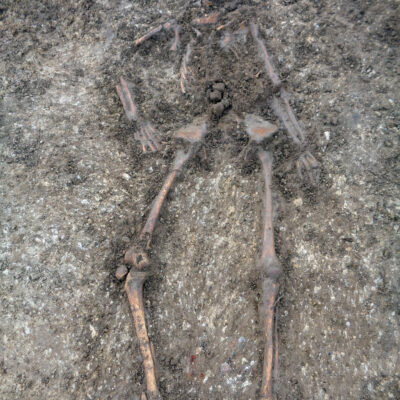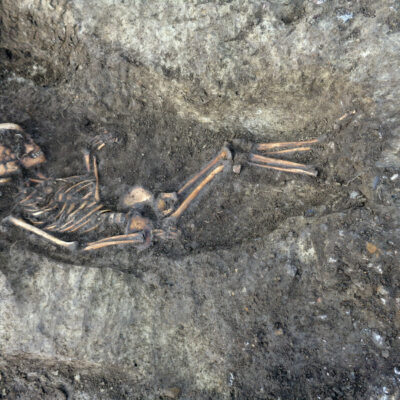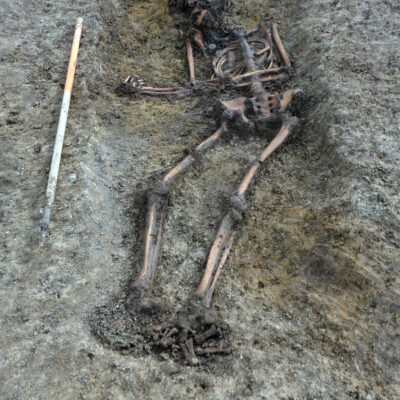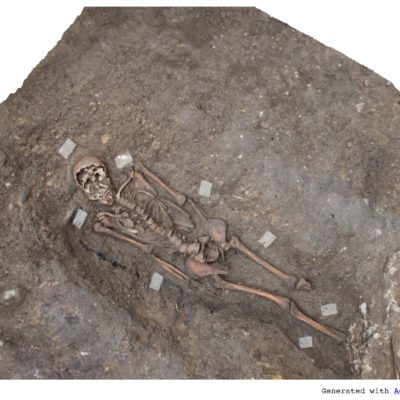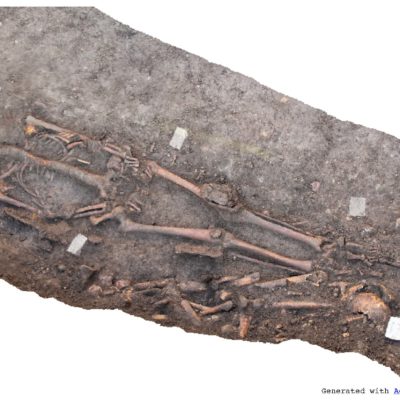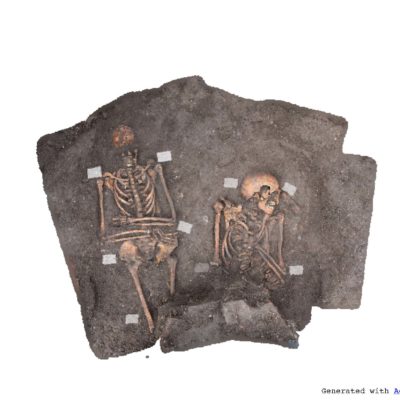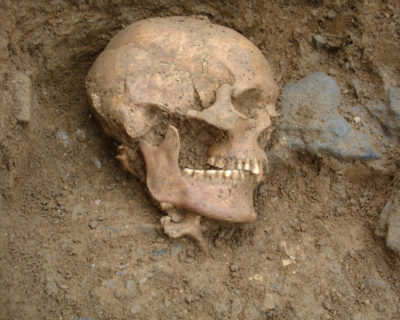Osteoarchaeology
The scientific study of human bones recovered from archaeological sites – whether burials or cremations – can reveal a wealth of information to help build a picture of our ancestors’ lives, from what they ate to the kinds of work they did, from their living conditions to the diseases and ailments from which they suffered, many of which are familiar to us today, such as tooth decay and arthritic joints.
Where sufficient bone material survives, basic measurements can be taken to ascertain the sex and build of an individual, while telltale markers preserved in the bone provide evidence of disease and deformity (known as palaeopathologies) brought on by factors such as contagion, poor diet, unhealthy living conditions, heavy manual labour or simply old age. Where a group of burials is available for examination, the age profile and social status of local populations can be ascertained.
Beyond visual examination, modern chemical techniques, such as strontium, oxygen and carbon isotope analysis, can be applied to samples of tooth enamel to establish an individual’s place of birth while carbon and nitrogen data extracted from bone collagen has the potential to address questions of diet and environment. The isotope data can indicate an individual of local birth or a person who moved to an area from a childhood home elsewhere in the country or even overseas. DNA extracted from bone can demonstrate the relationships of people in the past to each other and to people alive today.
Where human remains are encountered or suspected during the course of our fieldwork, our inhouse osteoarchaeologist will attend site in person to identify the remains and to supervise their recording followed either by excavation or preservation in situ. After lifting the skeleton, it is also important to retrieve (usually by sieving) small bones, calcified material such as arterial plaques and bladder stones and any small artefacts that may have been interred with the individual.
The treatment of human remains is an extremely sensitive area and we are scrupulous in our adherence to ethical best practice, including screening human remains from public view, and all associated legalities.
Link to view video
What Happens Next?
It is generally the case that archaeological projects involving the excavation and study of human remains make provision for reburial in consecrated ground following assessment/analysis.

